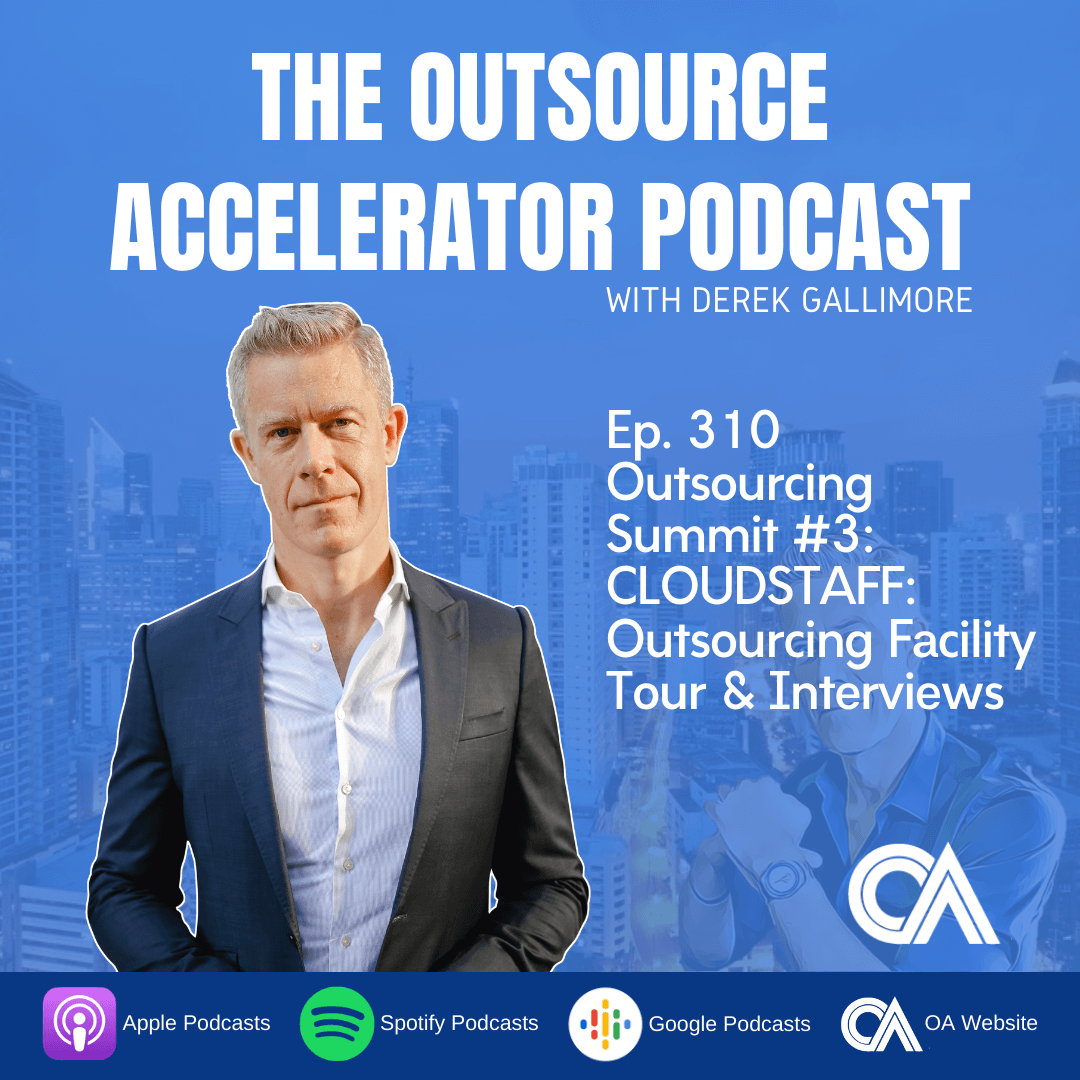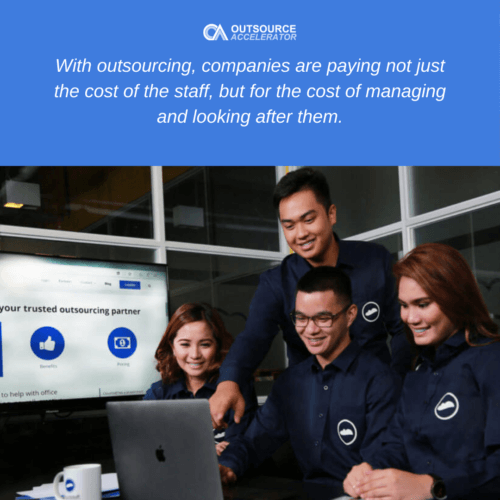Outsourcing Summit #3: CLOUDSTAFF: Outsourcing Facility Tour & Interviews

Watch the Outsourcing Summit 2020 video replay
https://www.outsourceaccelerator.com/outsourcing-summit/os2020-replay
About the Outsourcing Summit 2020 – Session 3
This episode features the third of six sessions from the Outsourcing Summit 2020, held on the 8th of October.
In this session, Derek Gallimore takes a tour around Cloudstaff, one of the leading BPO companies in the Philippines, with CEO Lloyd Ernst and team. They discuss the future of globalized professionals services, the challenges in outsourcing, and how Cloudstaff rises up to these challenges.
A brief background of Cloudstaff
Australian internet pioneer and Cloudstaff CEO Lloyd Ernst established the company in the Philippines in 2009, starting with seven staff. The business, from then until now, is driven by the cloud.
Currently, Cloudstaff has around 2,500 staff members that operate in 10 offices distributed in four different regions in the Philippines. Lloyd said that they’re a “little bit different” from the large business process outsourcing (BPO) companies, as their clients are small to medium-sized enterprises (SMEs). They’re not the “classic call centers” that work with multinational corporations like Dell and Citibank; but they provide services “all across the board.” They provide accountants, to designers, developers, customer service agents, to e-commerce agents.
BPO today
Since the origins of BPOs started with the big call centers servicing American corporations, most people have the misconception that the Philippine outsourcing industry revolves just around that. According to Lloyd, it has changed, “because the technology barrier has actually gone.” Today, BPO companies like Cloudstaff “are doing such a breadth of work.”
According to Lloyd, outsourcing is driven by the fact that most businesses just don’t have the time. Companies are paying not just the cost of the staff, but for the cost of managing and looking after the staff. Before, Lloyd said that employees get so busy with basic work that they don’t get to focus on the business. Now, since everything is moved to the cloud, businesses are given the ability to be able to put in place a workforce, which is distributed around the globe. Cloudstaff has now freed up the business’ core team members’ time so they can focus on growing the business.
Getting started with outsourcing
The Cloudstaff CEO recommends that outsourcing beginners “start with the low hanging fruit.” He said choose back-office roles or accounting, where the processes are reasonably well defined. Lloyd said that what they tend to find is that customers grow in two dimensions.
The first one is that they may start off with a couple of bookkeepers or a couple of accountants. Clients usually start off with a couple of bookkeepers or a couple of accountants. When they realize that the model is working, they add the capacity. They hire three more accountants, then they add some desktop support people. This will then evolve and clients will look to hire designers, developers, and content employees. They expand capability-wise.
In addition, Lloyd noted that in Cloudstaff, clients have their own office. Inside these offices, you’ll find the company’s marketing staff, IT support agent, accountants, and SEO person. Everyone’s in their own office.
Choosing the Philippines as an outsourcing destination is a no-brainer. Lloyd said that English is ingrained in the Philippine culture, and that the Philippines is viewed as the English center of Asia.
Watch the replay of the Outsourcing Summit 2020 here.









 Independent
Independent




